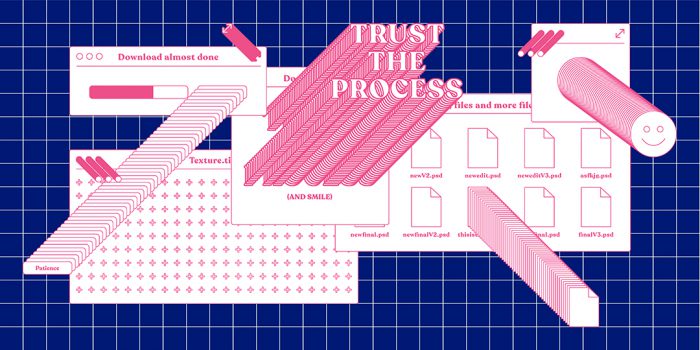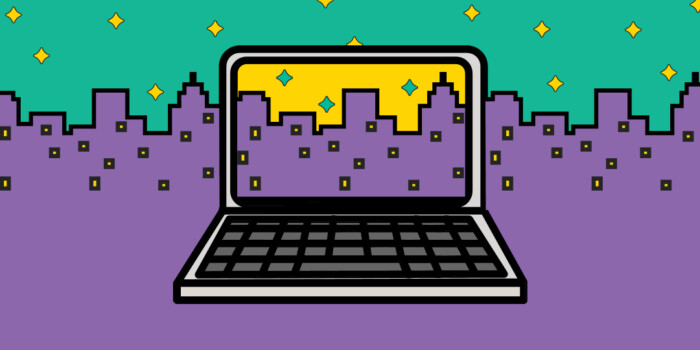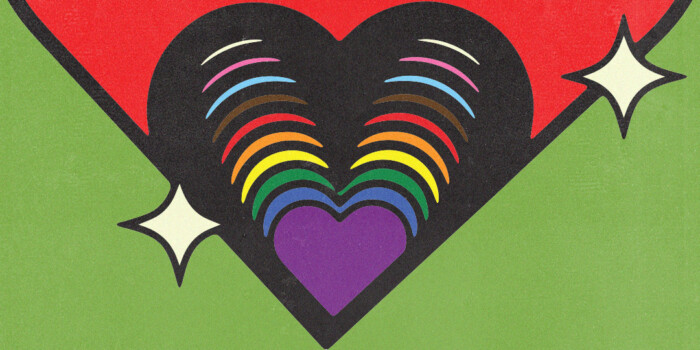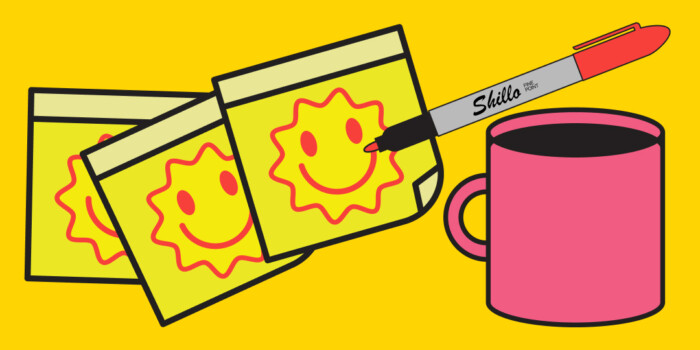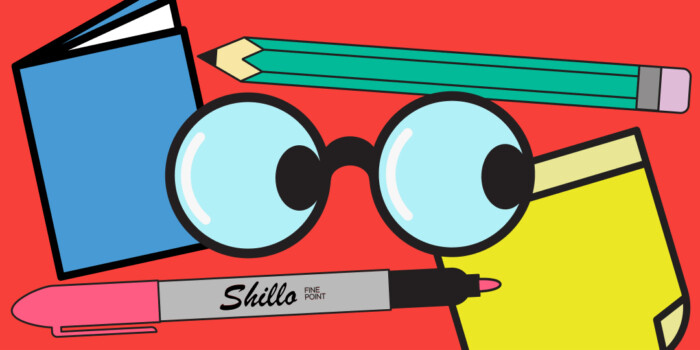How to Make a Career Change into the Graphic Design Industry
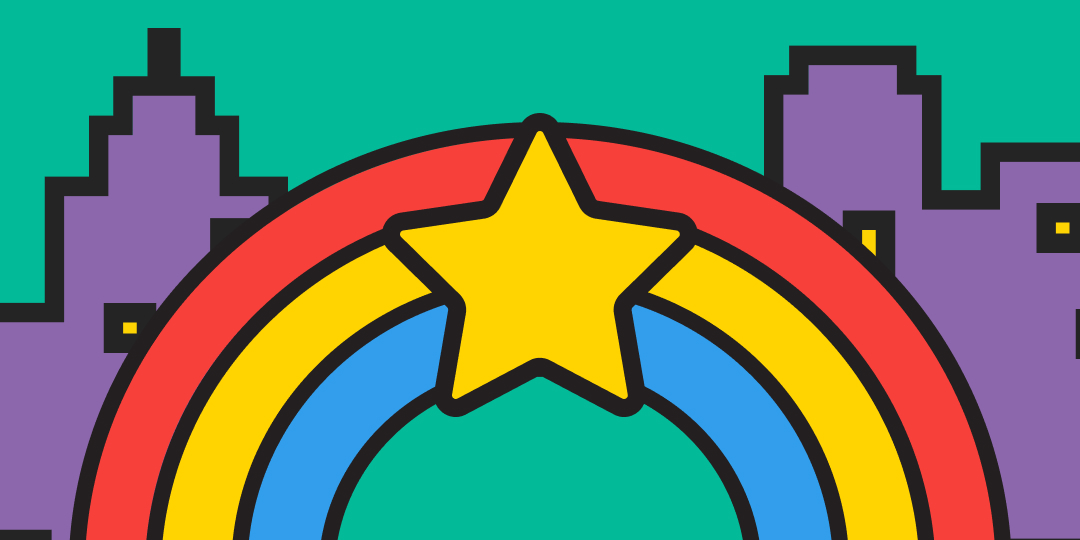
We’ve all been there, you’re stuck in a job that’s seemingly going nowhere and there is an untapped creativity inside you that you want to and should be using everyday. It’s time for a creative career change. Well, you’ve come to the right place. At Shillington, we know a fair bit about helping people to make a career change to graphic design—we’ve been doing that for over 25 years.
Now, we’re going to help you make a transition to a fulfilling, fun and creative career as a graphic designer. Just follow these easy steps.
What is a Graphic Designer?
Before making the jump to this fantastic career, we thought we would break down what a graphic designer is and what they do so we can help you make a fully informed creative career change. At Shillington, we define graphic design as the effective visual communication of an idea or concept. This, in turn, makes graphic designers visual communicators—it’s their job to take ideas and concepts and turn them into something visual.
The visuals that graphic designers create are a huge range of things. For example, the concept given them could be that of a new business and they have to take this concept and turn it into a visual identity—creating the entire “look” of the company. We call this branding. However, a graphic designers’ job doesn’t stop there—they also design a whole host of things, including advertising, publications: books and magazines, packaging, digital design: websites and apps, campaigns and so much more. Graphic design is an exciting, ever evolving field.
How to Make a Career Change to Graphic Design
Now you’ve got a sense of what a graphic designer is and does, we want to take you through how to make a change to this illustrious creative career.
1. Determine your Career Goals
First of all, you’ll need to determine your career goals—thinking about what you want to get out of your new creative career in graphic design. Start by determining what you want to invest in your new career—how long do you want to spend learning what you need to know? And how much do you want to spend to get there? This should then help to inform your path into graphic design.
Then think about your new creative job itself. Do you want to work as a graphic designer? Or something more specific like a digital designer or a brand designer? Would you rather work in a studio, in-house at a company or go at it alone and freelance?
These are all important questions to ask yourself as you plan out your future as they will help to shape the next steps and establish what kind of designer you want to be and what you need to learn to achieve this.
Once you have determined your career goals, it’s time to take the dive and become a graphic designer. The next step will depend on if you have any existing design skills or starting from scratch..
2. Refine your Graphic Design Skills
If you have already learnt a few skills in graphic design or picked up some in your current job, then this next step is for you. There are loads of ways to improve your graphic design skills—you could get a graphic design mentor, someone working in the industry who will be able to help you realise what skills you need and guide you through your introduction into the industry. Or, you could read blogs, design books and guides that will help you understand both what you need to learn and actually teach you these things as well.
Though, the best way to refine your graphic design skills to kickstart your career change to graphic design is to enrol on a graphic design course. There are many options for a course but the best bet for an upskiller is Shillington’s innovative graphic design course.
Shillington’s course teaches you all the processes and expertise you need to get your design skills back up to the mark in a remarkably short amount of time. Though, this isn’t just for the upskillers, which brings us onto our next step.
3. Enrol on a Graphic Design Course
Starting from scratch? Well the most important step in your creative career change is to learn graphic design. By far the easiest and quickest way of doing this is to enrol on a graphic design course like Shillington’s. In just three months full-time or nine months part-time, you’ll be taught everything you need to know to become a graphic designer: design theory, design thinking, foundation and application, the relevant design programs, branding and campaign roll-out, typography and typesetting and more. All taught by world class designers.
Best of all? At Shillington, you will not only learn what you need to know but you will also design and develop your own industry-ready graphic design portfolio—the key to your creative career change. Your portfolio features your own design projects to demonstrate your passions and skills. It is the first thing that recruiters will see when you apply for a design job, whether you’re applying for a job in a studio or pitching to clients as a freelance graphic designer.
4. Network with Other Designers
You’ve learnt graphic design and all the associated skills and you’ve got a portfolio so you’re well into your career change to graphic design. It’s time to meet some other graphic designers—both those who are new to the industry like yourself and those who have been working as designers for a while. We’ve already talked about mentoring and this is a great way to meet other designers, but it’s also well worth getting out to design events and meetups in your local city. The design community is a welcoming, friendly place full of different backgrounds and stories and your creative career change story will be met with open arms. You never know who you’ll meet—you might even end up working or collaborating with some of them.
Though don’t fret if you can’t find any design events close to you, being a technology led industry also means that there are plenty of digital, remote events around, especially in a post-pandemic world. Lack of access to the world’s design hubs doesn’t impact your ability to make a career change to graphic design at all.
5. Find a Graphic Design Job
Once you’ve got the skills and a portfolio that shows what you can do, the next step is to find yourself a graphic design job.
Once you’re working, your creative career change is complete and you can truly say you’re now a graphic designer.
As we said before, there’s several career route options in graphic design—a studio job, an in-house job or freelance. What’s the difference? A studio job means working as a graphic designer or related job in a graphic design studio or agency. Studios can be large, global businesses with hundreds of designers working for them or small companies with just a handful of designers working together—sometimes even without a physical office space. No matter the size, design studios work for a variety of clients across different industries. In-house means working as a graphic, digital or other designer for a company creating design work solely for that company. And, finally, working freelance means the same as any other industry—working for yourself creating design work for multiple clients.
Actually finding a job to finish your career change to graphic design is an easy process with plenty of jobs boards dedicated specifically to the full spectrum of graphic design roles, including Shillington’s own design jobs board.
There you are—an overview of what it means to be a graphic designer and how to change what you do to a creative, fulfilling career. Good luck with your creative career change!
If you want to make a creative career change to graphic design, then Shillington’s graphic design course is the best chance of doing so. Our graphic design course has allowed hundreds of graduates to make the jump to a new creative career—including lawyers, architects, accountants and pilots.
Want to win some amazing prizes and stay in the loop with all things Shillington? Sign up to our newsletter to automatically go in the draw.


